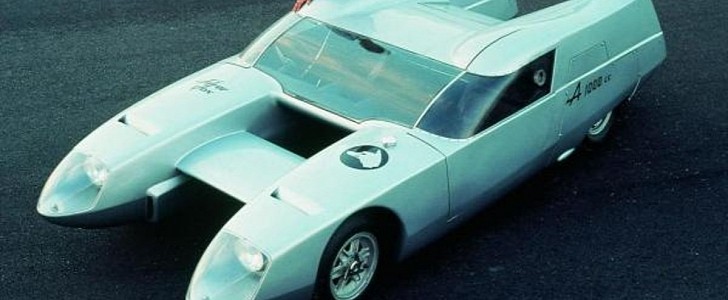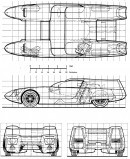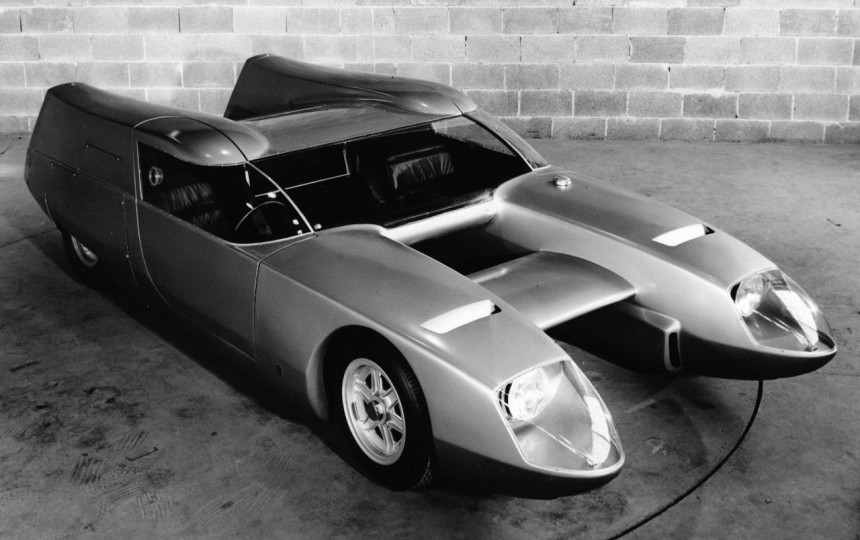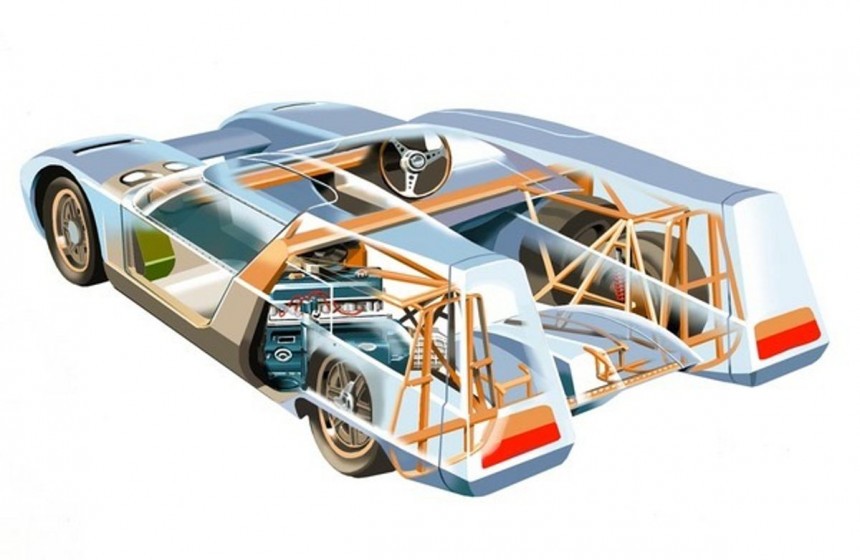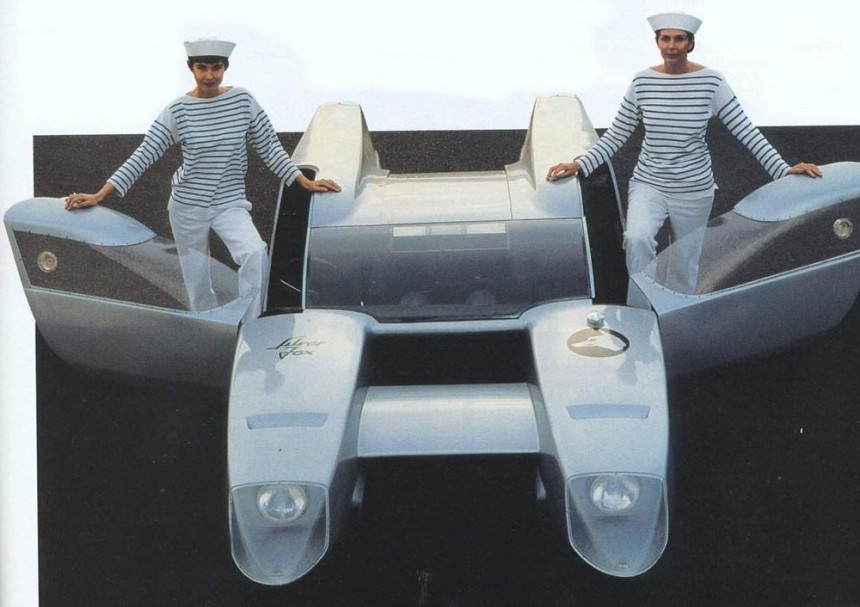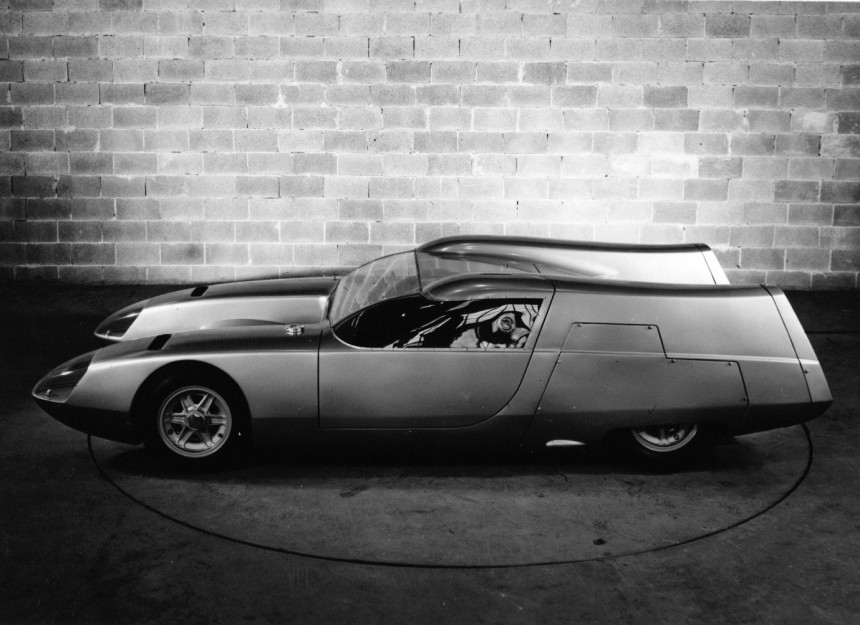To most of the world, Italy is famous for pizza, pasta, and gelato. To us gearheads, Italy is the country that spawned the Vespa scooter and some of the coolest supercars out there. Italy is home to automakers like Ferrari, Lamborghini, and Maserati, all of which have produced fast and powerful works of art on four wheels.
But Italy was also home to small carmakers and coachbuilder shops that ventured into experimental automotive territory. OSI, short for Officine Stampaggi Industriali, is one of them and its 1967 racing prototype, the Bisiluro, is perhaps the weirdest performance car to hail from the country that Michelangelo called home.
Established in 1960 by former Ghia president Luigi Segre, OSI was an independent design branch of the more famous design house and handled a series of niche projects. OSI started out with the Innocenti 950 Spider, but it also created custom cars based on Alfa Romeo, Fiat, and Ford Models.
The Alfa Romeo Giulia Scarabeo was one of its most notable projects, but the Ford 20M TS Coupe, based on the Taunus 20M, was far more popular with around 2,200 units built. OSI also produced the Ford Anglia Torino, which became a hit in Italy with some 10,000 examples sold.
The company had become one of the most important coachbuilders in Italy by 1963, but things went downhill after Luigi Segre's death that year.
Without a direct link to Ghia, OSI ran out of contracts and Segre's successor failed to commission new projects. The company was forced to lay off 2,000 employees in 1966 due to a lack of funds.
In a final effort to save itself from bankruptcy, OSI designed the Bisiluro, also known as the Silver Fox. Unlike its previous projects, the Silver Fox was developed with racing in mind.
But that wasn't the only thing that made it special. The Bisiluro looked downright weird, even for a race car built in the 1960s, an era when carmakers were experimenting with all sorts of outlandish designs.
Essentially a two-seat cabin placed between two pontoons, the Silver Fox looks like a cataraman on wheels. The pontoons were basically connected by a central cockpit and two decks between the front and rear "fenders." These elements were also part of a complex spoiler system that also included a wing mounted behind the cabin, similar to a modern tailgate spoiler.
While the front and the upper spoilers were manually adjustable, the rear one was in a fixed position.
This never-before-seen design helped the Silver Fox reach a top speed of 155 mph (249 kph). It might not sound like much in 2021, but it was an impressive figure back in 1967. Yes, the Lamborghini Miura was capable of 171 mph (275 kph), but that number was backed by a big V12 engine. The Silver Fox, on the other hand, featured a 1.0-liter Renault Alpine four-cylinder engine, most likely capable of less than 100 horsepower.
And interestingly enough, the engine was mounted behind the left-side passenger seat, most likely to counteract the weight of the driver, who sat in the right pontoon.
ISO intended to race the Silver Fox at the 1968 24 Hours of Le Mans, but the plan amounted to nothing when the company went under in late 1967. The design office was merged with Fiat's in 1968 and ISO morphed into a producer of steel pressings and industrial equipment.
A sad fate for a decidedly wild project, but at least the Silver Fox survived to tell its story. Displayed at the Goodwood Festival of Speed back in 2013, the prototype is privately owned by French racing driver Paul-Emile Bessade. And hopefully, it will come out of storage again soon.
Established in 1960 by former Ghia president Luigi Segre, OSI was an independent design branch of the more famous design house and handled a series of niche projects. OSI started out with the Innocenti 950 Spider, but it also created custom cars based on Alfa Romeo, Fiat, and Ford Models.
The Alfa Romeo Giulia Scarabeo was one of its most notable projects, but the Ford 20M TS Coupe, based on the Taunus 20M, was far more popular with around 2,200 units built. OSI also produced the Ford Anglia Torino, which became a hit in Italy with some 10,000 examples sold.
Without a direct link to Ghia, OSI ran out of contracts and Segre's successor failed to commission new projects. The company was forced to lay off 2,000 employees in 1966 due to a lack of funds.
In a final effort to save itself from bankruptcy, OSI designed the Bisiluro, also known as the Silver Fox. Unlike its previous projects, the Silver Fox was developed with racing in mind.
Essentially a two-seat cabin placed between two pontoons, the Silver Fox looks like a cataraman on wheels. The pontoons were basically connected by a central cockpit and two decks between the front and rear "fenders." These elements were also part of a complex spoiler system that also included a wing mounted behind the cabin, similar to a modern tailgate spoiler.
While the front and the upper spoilers were manually adjustable, the rear one was in a fixed position.
And interestingly enough, the engine was mounted behind the left-side passenger seat, most likely to counteract the weight of the driver, who sat in the right pontoon.
ISO intended to race the Silver Fox at the 1968 24 Hours of Le Mans, but the plan amounted to nothing when the company went under in late 1967. The design office was merged with Fiat's in 1968 and ISO morphed into a producer of steel pressings and industrial equipment.
